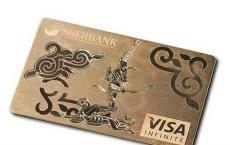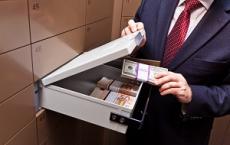Knitted cover for a flash drive “Owl. Programs for recovering flash drives
Flash drives often break and, as a rule, the outer shell - the case - fails. How to revive the drive so that it will serve you for a long time? Read on for how to make a DIY flash drive case: step by step instructions.
Today we're going to look at a few questions:
- how to properly disassemble flash drives of different designs;
- what tools are needed for this;
- how to make a case for a flash drive.
In addition, we will tell you which materials at hand can be used to create a new case, and which ones are better not to use so as not to damage the media. At the end there will be small workshops on how to design this device in the form of a Lego cube and a lighter.
Flash drives are an integral part of modern life. Of course, there are various other kinds of storage media. Computers, laptops have long appeared in everyday life, in the end, some even use their smartphones for this. But despite this, these storage media do not lose their relevance: they can store large amounts of information, quickly and easily connect to various devices, do not take up much space. They are used to store photos, videos, movies, music, and for many, this is an indispensable thing at work, for transferring reports, presentations and important documents.
Usually they are in a plastic "body", sometimes in silicone - manufacturers like to make such types in funny forms like fruits, cartoon characters and TV shows. And much less often they are more impressive, for example, steel. Plastic data carriers are easily damaged, they can break from an unexpected fall, bend at a break, crack when under a heavy object.
What is the way out of this situation? Spending money to buy a new device, time to transfer information? Why, if you can just read this article and learn how to create your own original case for a flash drive. IN options you are limited only by the availability of materials and your imagination, the methods and types of home-made cases can be different: from a Lego cube or a piece of a bar left after repair, and ending with an ordinary cork. Some craftsmen create real works of art in various styles and even sell them. Since there are a lot of options, we will look at the basic principles - how to properly remove a flash drive from an old "body", and how not to damage it, what tools you may need and what items can be used to create a new design, and what materials should not be used.

Removing a flash drive
So, let's begin! First, just in case, transfer all the content to another device. A flash drive is:
- whole;
- collapsible.
If the former have a visible gap in the case, then the latter look monolithic. But both of them can be easily disassembled, the main thing is to know how.
Let's start with the "whole" type. Its connector is connected by a latch to the board, and this latch is latched, and it is impossible to disconnect it in the usual way. We need a thin, flat screwdriver. Using this tool, we make a hole between the body and the latch. Carefully, so as not to damage anything, lightly pressing, swing up and down. Such holes must be made in three or four places where the connection goes, now we can easily remove it.

Now about how to remove the case from a "collapsible" flash drive. Such a drive is much simpler and its disassembly requires less effort: there is a small slot along the case that facilitates work. We will also need a thin pen screwdriver. Unlike the monolithic type, there is no latch here, but there are latches that we need to open. We insert a screwdriver into the groove and open the case using the same rocking method. The latches may break, but this will not cause any harm to the drive.
Making a case for a flash drive
Well, we dismantled the flash drive, and now we move on to the main task - how to make a case for a flash drive? Your homemade version, as mentioned earlier, can have any form - the main thing is to keep the functionality of the drive. Firstly, the item must be easily connected to the computer, and secondly, the materials must not damage its components.
That is, the protruding edges should not interfere with the connection to the USB port, since an incompletely inserted one may not work, and it is also necessary to avoid collision of components with hot glue, paint and other aggressive materials. The new case must be sealed and prevent moisture from entering the board. The easiest way to choose plastic. It is much more difficult to create a shell made of wood or metal, but it will definitely last a long time and will retain its “presentation”.

One of the options for the case - from electrical tape
We make a flash drive case from a lighter
We will consider the simplest option, made from an ordinary lighter. Almost everyone has an old used lighter lying around somewhere at home, and sometimes they also have interesting design. We will need a clerical knife, a glue gun, a lighter of a suitable size, a screwdriver with a 3 mm drill. Such a lighter is suitable so that a flash drive without a case fits completely into it and only the USB port protrudes. Glue can be used any of those suitable for plastic.
First you need to release the remaining gas from the lighter, then make two holes in the bottom. Next, we make a cut with a knife along the contour framed by holes. Inside we install a USB flash drive and glue it with the case, remove the remaining glue. Our new drive enclosure is ready. We have an interesting and practical flash drive-lighter. As you can see, it is not difficult at all and does not take much time.

Flash drive - Lego cube
Another way to design a flash drive in an original way is to make it in the form of a Lego cube, which almost everyone has. We will need a few Lego blocks, a penknife, pliers, glue suitable for plastic, polish and sandpaper. First, we select cubes that are suitable in size for our flash drive. You can make a case from several cubes different sizes and flowers. We cut all the internal partitions with a penknife, now we break them out with pliers. We use the second same cube for the lid, cutting off everything to the top. At the end, we cut a hole for the USB connector, adjust, install the device.

Using the remains of the brick, we fix the flash drive so that it lies parallel. We fill the empty space, for this you can use transparent silicone. So that there is no gap between the base part and the cover, we rub the joint with sandpaper, glue it. After the glue dries, remove the residue using sandpaper. With the help of a polish, we complete the work.

Your exclusive do-it-yourself flash drive is ready!
So, as you may have noticed, making a case for a flash drive is not so difficult. The main advantage of making it yourself is that it will be truly original. After all, before proceeding with its implementation, you turn on your imagination, choose materials from improvised and more accessible to you, put them together and as a result you have an original and individual flash drive, which 100% will not go unnoticed. It will certainly emphasize your individuality and creativity.
Which is made by hand. You can make it for a loved one.
I propose to tie an original case for electronic media as a gift. In addition to pleasant impressions, a person will receive useful thing to prevent damage to the flash drive when dropped or exposed to low temperatures.
For work you will need: a flash drive, a ruler, a hook and threads.
In the proposed model, cotton threads "Iris" are used, but if desired and possible, you can use any.
At the beginning of knitting, you should measure the length and width of the flash drive. Tie a chain of 25 air loops, one and a half times more than the length of the flash drive itself.


Then, without turning the product, we continue to knit columns in a circle, sticking a hook into the air loops of the chain.

In the last loop we knit 3 columns without a crochet. We proceed to the second row without a lifting air loop. Now we knit all the time in a circle single crochet without adding 11-12 rows so that the flash drive placed inside is completely hidden inside.



Thus, a small bag with a height of about 2.5 centimeters is obtained.



We do not knit the connecting row to the end by 2 cm - a distance equal to the width of the flash drive so that it freely enters and exits the case. We pass the thread through the last loop and tighten. We draw the thread with a hook inside out, fasten and cut off the end.

For reliability, I recommend attaching a USB flash drive to the case. So you don’t have to worry about losing the case and it’s comfortable to wear on your arm or neck.
You need to tie a string. To make it stronger, you need to knit in two threads. To do this, you should unwind, without tearing off the ball, the thread is four times longer than the required lace. Then knit a chain of air loops of the required length with a double-folded thread.

When the lace is ready, we pass it through a special hole on the flash drive.

We turn the cover inside out and thread the cord through the bottom of the cover with a hook.
Welcome to all beginners, as well as experienced life hackers of this site!
We have an electronic magazine where we write various interesting articles about useful gadgets and unusual concepts. We also look into the future or make the present more interesting, more beautiful and more useful. Read the next article of the electronic magazine.
Almost everyone has a USB flash drive these days. But with all the variety, the range of cases for such devices is quite limited. And, why not make a case for a flash drive yourself? It is not as difficult as it seems, you just need to spend quite a bit of time. But you will become the owner of a unique little thing.
So let's get started! Following step by step instructions, we will make a case for our USB flash drive from Lego bricks for children.
 This is how she will look
This is how she will look
Tools and materials
Penknife
Pliers
Several Lego blocks
Super glue
Sandpaper
Metal polish
Flash drive
Step 1. Body base
 Internal elements are broken
Internal elements are broken
USB memory cards come in different sizes. We will package quite a large fee. Therefore, we need a brick from Lego with a size of 6 × 3 cylindrical landing elements (we agree to call them "points").
With a penknife, you need to cut all the internal partitions of the brick, and then break them out with pliers.
We use two more low-profile bricks with sizes 4x2 and 2x2 "points" to create a cover. Also, for the lid, you will need a low-profile element of 1 × 6 “points” (for the lid, you can use other combinations of designer parts, or you can simply take exactly the same brick as for the base of the case (6 × 3), and carefully cut off its upper part with a jigsaw parallel to the horizontal plane).
Using superglue, we glue the elements of the cover to get a part of 6 × 3 “dots” in size.
Step 2 Installing the Board
 Board in the case
Board in the case
At the end of the case, we cut out a groove for the USB connector, and after a slight adjustment with penknife install the device in the case.
Step 3. Fixing the board
 We fill the body with silicone
We fill the body with silicone
We put brick trimmings on the bottom of the case and make sure that the board is parallel to the horizontal plane and does not push through. We fill all the remaining space in the case with transparent silicone, sealing it to reduce the possibility of any movement of the flash card inside the case.
It is important to use transparent silicone, since the indicator LED will have to shine through it.
Step 4 Gluing and Polishing
 We clean the edges
We clean the edges
 Polishes of different abrasiveness
Polishes of different abrasiveness
To ensure that there are no gaps between the lid and the case, we take sandpaper, put it on a flat surface, and align the lower plane of the lid on it.
After we glued the lid to the case with superglue, use the same sandpaper to remove burrs and smudges of glue from the side faces of the case.
Then we finish polishing the body with a polish.
Step 5. Finish
 Hull ready
Hull ready
 Compare your exclusive and mass consumer goods
Compare your exclusive and mass consumer goods
 Look stylish!
Look stylish!
But the creative possibilities for creating exclusive flash drives do not end there. On the contrary, there can be an infinite number of types of cases for them.
See what other craftsmen have done.

Do you have the original flash drive? What ways of personalizing this mini-carrier do you know?
In the meantime, there are still some unread curiosities in the mini-magazine: a visionary video about the medicine of the future; gadgets - a stationary cell phone and a bottle for a tourist to disinfect water. and don't miss anything!
Not all old tablets support the function of connecting a flash drive or modem, but I will tell you how to outsmart them and connect a flash drive, modem and even a hard drive to them.
Today I want to bring to your attention OTG - an adapter.
First I want to tell you what is OTG? This is a way to connect to your tablet or phone that supports OTG function, printer, flash drive and even hard drive. This connection is also called USB-host.
You can also connect a keyboard or mouse to your gadget, if the gadget supports such a function.
And so, to create this miracle cable, we need:
Old USB extension cable
Micro USB connector (you can get it from a regular USB cable for your device)
Soldering iron and soldering accessories
And so, let's go, in order for us to make such a cable, we will need to connect the 4th pin to the 5th pin of the micro USB connector
We need to get to the fourth pin and connect it with a jumper to the GND wire as shown in the picture.

After we connect the 4th and 5th contacts with a jumper, our gadget will act as an active device and will understand that another passive device is going to be connected to it. Until we put a jumper, the gadget will continue to act as a passive device and will not see your flash drives.
But that's not all, to connect a hard drive to a phone or tablet, this adapter will not be enough for us. To connect devices whose consumption is more than 100mA, namely 100mA, the port of your device can give out, we will need to connect additional power to our OTG cable, which should be enough to make your hard drive work.
Here is a diagram of such an adapter

Now it's time to start collecting
We take an old USB extension cable and cut it not very far from the 2.0 connector, since the current is only 100mA to avoid large losses. Cut off approximately in the place as shown in the photo

After we clean our wire


I connected with a drop of solder 4 and 5 pins.
Well, here is our entire cable assembly

It remains only to check the performance, take the tablet, insert the “adapter” and insert the USB flash drive into it, everything works, as the flashing LED on the USB flash drive and the tablet identifying the USB flash drive tell us.



